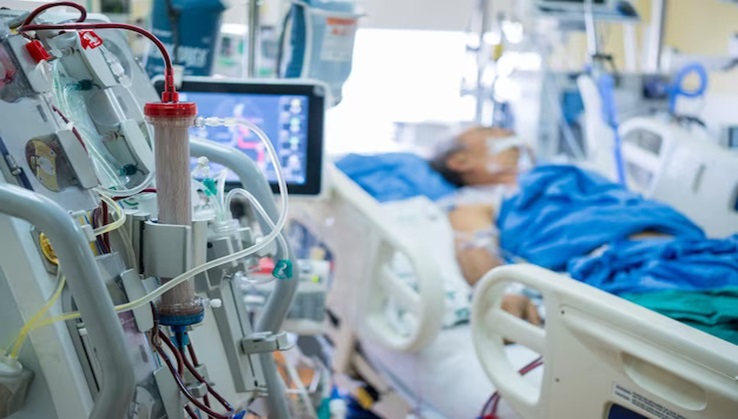Endocrinology
Dialysis: A Lifeline for Kidney Patients
November 2023
Introduction
Dialysis is a medical procedure that has revolutionized the field of nephrology, providing hope and extending the lives of countless individuals suffering from kidney failure. When the kidneys are unable to perform their vital functions, such as removing waste and excess fluids from the blood, dialysis becomes a lifeline, serving as an artificial kidney. In this article, we'll explore what dialysis is, its types, the procedure, its role in kidney disease management, and the impact it has on patients' lives.
Understanding Dialysis<
Dialysis is a medical treatment that replicates some functions of the kidneys, primarily filtering waste products and excess fluids from the bloodstream. It is typically prescribed for individuals with end-stage renal disease (ESRD), a condition where the kidneys have lost nearly all of their function.
Types of Dialysis
There are two primary types of dialysis:
- Hemodialysis: Hemodialysis is the most common form of dialysis. During this procedure, the patient's blood is pumped through a dialyzer, a machine that filters out waste and excess fluid, and then returned to the body. Hemodialysis is usually performed at a dialysis center several times a week.
- Peritoneal Dialysis: Peritoneal dialysis uses the body's peritoneum, a membrane that lines the abdominal cavity, as a natural filter. A special dialysis solution is introduced into the abdominal cavity, and waste products and excess fluids pass into the solution. After a few hours, the solution is drained, removing the waste. Peritoneal dialysis can be performed at home or in a clinic.
The Dialysis Procedure
Hemodialysis and peritoneal dialysis have distinct procedures:
- Hemodialysis: Hemodialysis is typically performed at a dialysis center. A patient's blood is accessed through a surgically created vascular access, usually in the arm, which connects to the dialysis machine. Blood is pumped through the machine, filtered, and returned to the body. The process usually takes several hours, and it is done several times a week.
- Peritoneal Dialysis: Peritoneal dialysis is a more flexible option that can be done at home. A catheter is placed into the abdominal cavity, and dialysis solution is introduced. The abdomen acts as a natural filter, removing waste products. The used solution is then drained and replaced with fresh solution several times a day.
The Role of Dialysis in Kidney Disease Management
Dialysis serves as a life-saving intervention for individuals with kidney failure. It helps to:
- Remove Waste and Toxins: Dialysis filters waste, excess fluids, and toxins from the body, preventing the accumulation of harmful substances that can lead to various health complications.
- Manage Fluid Balance: Dialysis helps control fluid levels in the body, preventing fluid overload, which can result in high blood pressure and heart strain.
- Restore Electrolyte Balance: Proper electrolyte levels are crucial for heart and muscle function. Dialysis helps maintain the body's electrolyte balance.
- Mitigate Symptoms:Dialysis can alleviate symptoms of kidney failure, such as fatigue, nausea, and swelling, improving patients' quality of life.
Impact on Patients' Lives
Dialysis is life-sustaining, but it also presents challenges for patients:
- Time-Consuming:Dialysis treatments, particularly hemodialysis, can be time-consuming and may require multiple sessions per week.
- Dietary Restrictions: Dialysis patients often need to adhere to dietary restrictions to manage their condition effectively.
- Psychological Impact: Coping with the physical and emotional aspects of chronic kidney disease and the demands of dialysis can take a toll on patients' mental health.
- Financial Costs: Dialysis can be expensive, and many patients rely on health insurance or government programs to cover the costs.
Conclusion
Dialysis is a vital medical procedure that has revolutionized the management of kidney disease, providing hope and improved quality of life for individuals with end-stage renal disease. Although it poses challenges, it serves as a lifeline, offering patients the opportunity to live healthier, more fulfilling lives while awaiting potential kidney transplantation. Increased awareness and support for patients on dialysis are essential to ensuring their well-being and enhancing their overall quality of life.


